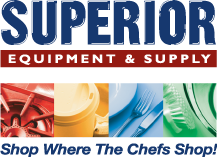
Takeout containers might seem like a no-brainer, but trust me—you don’t want to overlook this very important component of your restaurant. Today’s “on the go” world is about to get busier as more businesses expand their offerings with online ordering, pickup and delivery options. Plus, as more diners eat your food out instead of in, picking the right disposable for your menu items is key to preserving quality and keeping happy customers.
3 Biggest Concerns with Takeout Containers
Leaks: The last thing you want is to have the customer’s meal leak all over their car or lap on the journey home. You can help to prevent spills by packaging liquids (like soups and condiments) in separate, tight-sealing containers. Also pay attention to the thickness and quality of the disposable product, since liquids in a dish (think gravy) might soak through the container over extended periods of time.
Protect the Quality of Your Food: As a chef you spend a lot of time crafting memorable dishes that your customers will enjoy. It’s a lot easier to control that experience when the customer is dining just a few feet away from the kitchen. But with the advent of online ordering and delivery, chefs now have to consider that a customer’s first bite could be miles away from where the food is being prepared. And if, over the course of that time your food doesn’t hold up in its packaging guess who the customer will blame? Yup, you.
Make sure your menu items hold up on the journey by selecting the right packaging for your product. For example, warm, crispy French fries are at risk at becoming soggy when packaged in sealed containers that steam your spuds. Instead, opt for packaging fries in a small bag or fry cup to keep their crispy exteriors.
Eco-Friendly Supplies: Going green is more than just a marketing catch phrase, it’s a way of life that more and more businesses are following—and customers notice. Show customers you’re committed to sustainability goals by opting for eco-friendly takeout containers such as:
Compostable: Products made from compostable materials like sugarcane, bamboo, most bioplastics (think PLA plastic) and more can be composted in a commercial composting facility and turn into soil! Pretty cool, huh? Compostable products when used and composted correctly make the least impact on the environment. Though opting for compostable disposables over traditional disposables puts less of a strain on virgin resources, landfill diversion really depends on if your customers have access to composting facilities.
Recyclable: Recyclable products like paper, aluminum, plastic and more can be recycled in most municipalities. Greasy pizza box? Yes—recycle it! Always check with your local recycling center to find out what types of materials can be acceptable.
Post-Consumer Recycled Content: There’s a misconception out there that products made from post-consumer recycled content can be recycled, again. Unfortunately, while these products put less of a strain on virgin resources, very few municipalities can accept these products in their recycling center. Be sure to avoid cringe-worthy materials like Styrofoam which are a known landfill contributor that won’t break down.
Types of Takeout Containers
Clamshell: As an all-around customer favorite, the classic clamshell container is good for a variety of foods like sandwiches, leftover pasta and more. Just be sure you pay attention to the quality and thickness of the material, which may or may not hold up to more leftovers with a lot of liquid.
Bio Pack/Box: These folded boxes are another versatile option to use with a variety of leftovers, and new compostable plastic liners help prevent spills.
Soup Cup: Made for just that—soup! These containers often work for both cold or hot food, but check the manufacturer’s temperature ratings just to be safe.
Large Salad bowls: Salad bowls feature a large round bowl with rounded or flat plastic lid making it perfect for keeping greens from getting soggy.
Round Foil Takeout Pan: Made of recyclable aluminum and plastic, and these durable containers won’t leak from the base.
Specialty Containers: Certain cuisines like pizza and sushi travel well in specialized containers. Also be sure to include sealed condiment cups for additional sauces and toppings.
Cups: If you’re serving both hot and cold beverages, you’ll need two different types of cups. Hot cups are designed to withstand high beverage temperatures. Some might come insulated, but if yours doesn’t consider adding sleeves to protect customers from getting burned. Cold cups, on the other hand, are not equipped to handle hot beverages and could in fact, melt when something hot is poured in them. Lids are available for both hot and cold cups but must be purchased separately.
Want to go green? Hot and cold cups come in eco-friendly, compostable materials too! Equip your dining room with the proper 3-bin system and labeling chart to help customers divert their waste out of the landfill.
recycle-download compost-download landfill-download
Let’s Talk Straws: OK, not quite a container, but straws are getting a lot of press as of late and I’d be amiss not to give them their own callout. Straws are devastating to our marine environments because plastic never biodegrades. Instead, it breaks down into small pieces and then you face the issues of microplastics. But even before they break down into microplastics you face seriously harming the marine life.

